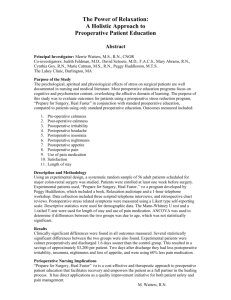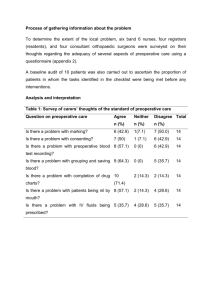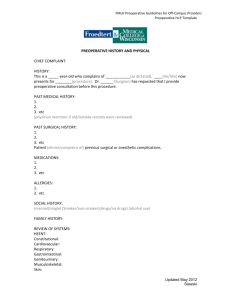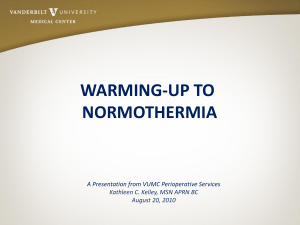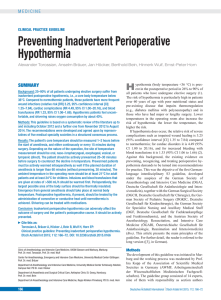File
advertisement
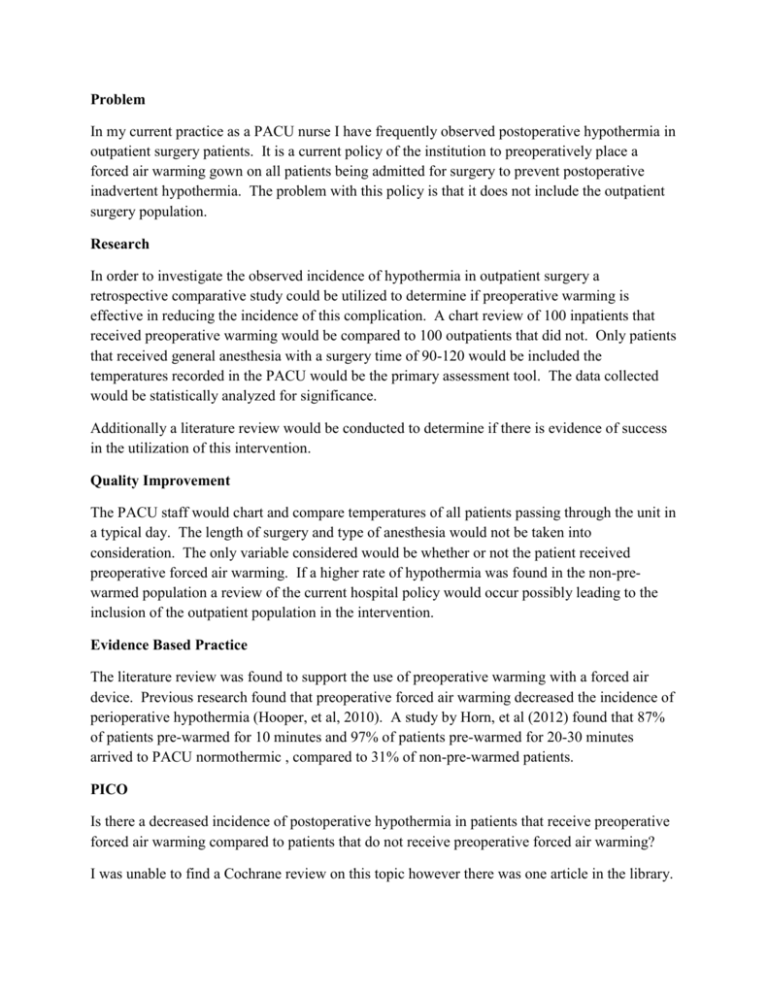
Problem In my current practice as a PACU nurse I have frequently observed postoperative hypothermia in outpatient surgery patients. It is a current policy of the institution to preoperatively place a forced air warming gown on all patients being admitted for surgery to prevent postoperative inadvertent hypothermia. The problem with this policy is that it does not include the outpatient surgery population. Research In order to investigate the observed incidence of hypothermia in outpatient surgery a retrospective comparative study could be utilized to determine if preoperative warming is effective in reducing the incidence of this complication. A chart review of 100 inpatients that received preoperative warming would be compared to 100 outpatients that did not. Only patients that received general anesthesia with a surgery time of 90-120 would be included the temperatures recorded in the PACU would be the primary assessment tool. The data collected would be statistically analyzed for significance. Additionally a literature review would be conducted to determine if there is evidence of success in the utilization of this intervention. Quality Improvement The PACU staff would chart and compare temperatures of all patients passing through the unit in a typical day. The length of surgery and type of anesthesia would not be taken into consideration. The only variable considered would be whether or not the patient received preoperative forced air warming. If a higher rate of hypothermia was found in the non-prewarmed population a review of the current hospital policy would occur possibly leading to the inclusion of the outpatient population in the intervention. Evidence Based Practice The literature review was found to support the use of preoperative warming with a forced air device. Previous research found that preoperative forced air warming decreased the incidence of perioperative hypothermia (Hooper, et al, 2010). A study by Horn, et al (2012) found that 87% of patients pre-warmed for 10 minutes and 97% of patients pre-warmed for 20-30 minutes arrived to PACU normothermic , compared to 31% of non-pre-warmed patients. PICO Is there a decreased incidence of postoperative hypothermia in patients that receive preoperative forced air warming compared to patients that do not receive preoperative forced air warming? I was unable to find a Cochrane review on this topic however there was one article in the library. Hooper, V.D., Chard, R., Clifford, T., Fetzer, S., Fossum, S., Godden, B, …Wilson, L. (2010).ASPAN’s evidence based clinical practice guideline for the promotion of perioperative normothermia: Second edition. Journal of PeriAnesthesia Nursing, 25(6), 346-365, doi:10.1016/j.jopan.2010.10.006 Horn, E.P., Bein, B., Bohm, R., Steinfath, M., Sahili, N. & Hocker, J. (2012). The effect of short time periods of preoperative warming in the prevention of perioperative hypothermia. Anaesthesia, 67,(6), 612-617, doi:10.1111/j.1365-2044.2012.0707.x




